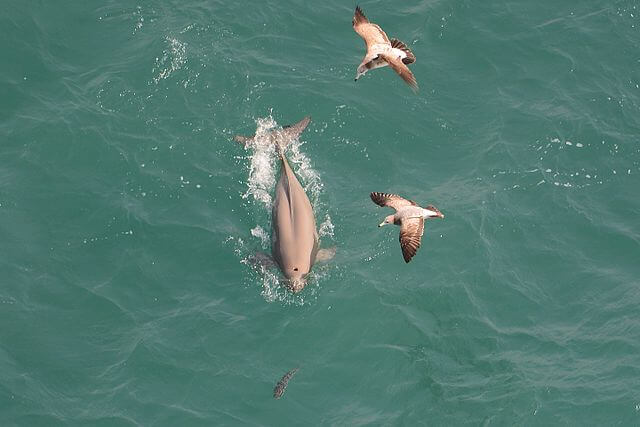
Chinese scientists are fighting to save one of the Yangtze River’s last great animal species – and a sweeping fishing ban is giving them hope.
At Wuhan’s Institute of Hydrobiology, just 5km from the riverbank, the preserved remains of the now-extinct baiji river dolphin and paddlefish sit behind glass, stark reminders of what has already been lost.
“Now that those have become extinct, we’re going to save the Yangtze river porpoise,” Professor Wang Xi said. “It has become the most important animal here.”
The last baiji died in 2002, two decades after researchers began caring for it. A year later, the final known paddlefish—an enormous ray-finned fish that could grow over three metres—was accidentally caught, tagged, released, and never seen again.
Now, attention is fixed on the Yangtze finless porpoise, of which only about 1,200 remain in the wild.
“It’s the only top-level predator left in the river,” Professor Wang explains. “They are rare and their numbers reflect the health of the entire system’s ecology.”
The idea of halting all fishing was first proposed in 2006 by Professor Cao Wenxuan of the Chinese Academy of Sciences (CAS), but it took years of pressure before a 10-year ban was finally enforced nearly five years ago. Backed by police and carrying prison sentences for violators, the ban has disrupted river life and forced 220,000 fishermen out of work.
Still, the porpoise—a relic species on the oldest branch of the porpoise family tree—remains critically endangered.
At the Institute, captive porpoises are studied by CAS scientists. Visitors can watch them race through tanks, darting playfully past the glass, seemingly curious about their human audience.
In the wild, though, survival is far more precarious. The completion of the Three Gorges Dam in 2006 didn’t directly block the porpoises’ life cycle, but it devastated the fish populations they rely on. For other species, like paddlefish and Chinese sturgeon, the dam was catastrophic.
Professor Wang Ding, a cetacean expert with the International Union for Conservation of Nature (IUCN), has spent his career working to preserve the Yangtze’s biodiversity.
“Every flood season we’d have to organise a team with strong muscles, using many men, to go to sleep on the bank of the river, just in case a flood came,” he says. “Then, if the flood hit, everyone would do their best to try to keep the levy banks solid, to make sure they were not broken by the dangerous rushing water.”
He notes that while the dam has helped mitigate flooding, it also prevents sturgeons from reaching their spawning grounds. Today, sturgeons survive in the river only because scientists release them by the tens of thousands, but they are no longer reproducing naturally.
To avoid the same fate for the finless porpoise, scientists hope the fishing ban will be extended beyond its initial 10 years. Their research, published in the Bulletin of the Chinese Academy of Sciences, shows fish stocks have rebounded dramatically since the ban began in 2021.
Other threats are harder to tackle. Noise pollution from busy river traffic disrupts porpoises’ sensitive hearing and communication—possibly contributing to the baiji dolphin’s extinction. Unlike fishing, stopping commercial shipping on the Yangtze is not an option for a river that underpins much of central China’s economy.
Still, some progress has been made. Thousands of polluting factories have been relocated away from the river, improving water quality. Community volunteers also play a role: retired photographer Yang He spends his days tracking porpoises with his camera, sharing his images with scientists and even helping authorities rescue one that had become entangled in netting.
The numbers tell the story. In the 1990s, there were about 3,300 porpoises; by 2006, the population had halved. Since the fishing ban and factory relocations, that decline has not only stopped but reversed. In the past five years, numbers have risen by nearly a quarter.
For scientists, these gains are more than a victory for the porpoise—they signal that, given the chance, the Yangtze itself can begin to recover.
“We’re saving the finless porpoise to save the Yangtze River,” says Wang Ding. “This is like a great mirror, to have an idea how well we have been doing protecting this ecosystem.
“If the porpoises are doing fine, if their numbers are increasing, this means the ecological health of the whole river is also improving.”
——————————————————————————
At Natural World Fund, we are passionate about restoring habitats in the UK to halt the decline in our wildlife.

